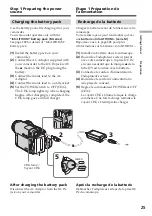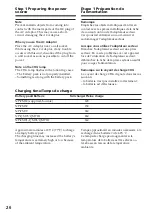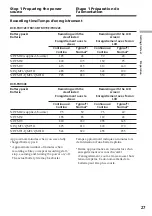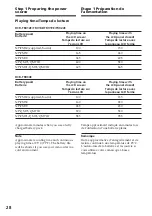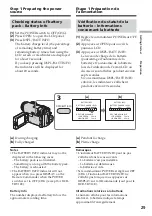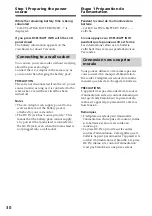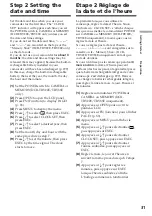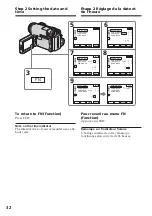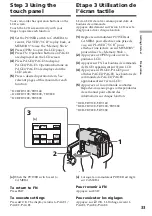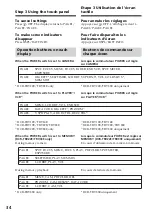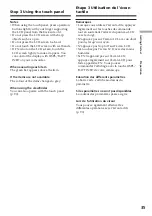
20
— Getting Started —
Using this manual
The instructions in this manual are for the 5
models listed in the table on the next page.
Before you start reading this manual and
operating your camcorder, check the model
number by looking at the bottom of your
camcorder. The DCR-TRV33E is the model
used for illustration purposes. Otherwise, the
model name is indicated in the illustrations.
Any differences in operation are clearly
indicated in the text, for example, “DCR-
TRV33E only.”
As you read through this manual, buttons and
settings on your camcorder are shown in
capital letters.
After “Advanced Recording
Operations” section of this
manual, position of the POWER
switch is shown by the icons
below.
: Set the POWER switch to
PLAYER (DCR-TRV12E/
TRV14E).
: Set the POWER switch to VCR
(DCR-TRV19E/TRV22E/
TRV33E).
: Set the POWER switch to
CAMERA.
: Set the POWER switch to
MEMORY (DCR-TRV22E/
TRV33E).
When you carry out an operation, you can hear
a beep to indicate that the operation is being
carried out.
VCR
OFF(CHG)
POWER
CAMERA
MEMORY
— Préparation —
Utilisation de ce manuel
Les instructions contenues dans ce manuel
sont valables pour les 5 modèles indiqués dans
le tableau à la page suivante. Avant de lire ce
manuel et d’utiliser le caméscope, vérifiez le
numéro de modèle indiqué sous votre
caméscope. Les illustrations de ce mode
d’emploi représentent le DCR-TRV33E. S’il
s’agit d’un autre modèle, son nom est indiqué
dans l’illustration. Toute différence de
fonctionnement est clairement signalée dans le
texte, par exemple, « DCR-TRV33E
uniquement ».
Dans ce manuel, les touches et les réglages de
votre caméscope sont indiqués en majuscules.
Après la section « Opérations
d’enregistrement avancées » de
ce mode d’emploi, la position du
commutateur POWER est
indiquée par les icônes ci-
dessous.
: Réglez le commutateur
POWER sur PLAYER (DCR-
TRV12E/TRV14E).
: Réglez le commutateur
POWER sur VCR (DCR-
TRV19E/TRV22E/TRV33E).
: Réglez le commutateur
POWER sur CAMERA.
: Réglez le commutateur
POWER sur MEMORY (DCR-
TRV22E/TRV33E).
Chaque opération effectuée est confirmée par
un signal sonore.

















